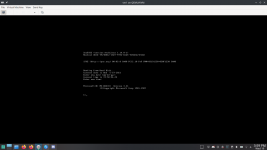Hi everyone, I have an IDE/CF adapter for my 5150 and I along with my cousin have been trying to format it in some way to get it to boot, to limited to no success. I was wondering if anyone knew how we could put DOS onto the CF card and get it to boot. We've tried formatting the CF card with MS-DOS 3.31 in a VM and installing to it, which installs and boots under the VM, however in the 5150 it says "Missing operating system" after correctly detecting the card and attempting to boot from it.
I ran:
format c: /s
md c:\dos
copy a:\ c:\dos
copy a:\command.com c:\
and this boots correctly under the VM.
We have also attempted to low-level format the card in the VM like here:http://minuszerodegrees.net/ibm_xebec/ibm_xebec_llf_debug.htm but same problem.
What are we missing here? Not sure what the usual steps to do this is, and we do not have access to floppies to try booting from one and installing that way.
The card is a ToshibaTHNCF256MMA, in the IBM 5150 with 256KB RAM, Monotech XT-IDE Deluxe with CF adapter, floppy controller with two 5.25" drives, and a clone Hercules for MDA graphics output to a 5151.
I ran:
format c: /s
md c:\dos
copy a:\ c:\dos
copy a:\command.com c:\
and this boots correctly under the VM.
We have also attempted to low-level format the card in the VM like here:http://minuszerodegrees.net/ibm_xebec/ibm_xebec_llf_debug.htm but same problem.
What are we missing here? Not sure what the usual steps to do this is, and we do not have access to floppies to try booting from one and installing that way.
The card is a ToshibaTHNCF256MMA, in the IBM 5150 with 256KB RAM, Monotech XT-IDE Deluxe with CF adapter, floppy controller with two 5.25" drives, and a clone Hercules for MDA graphics output to a 5151.



